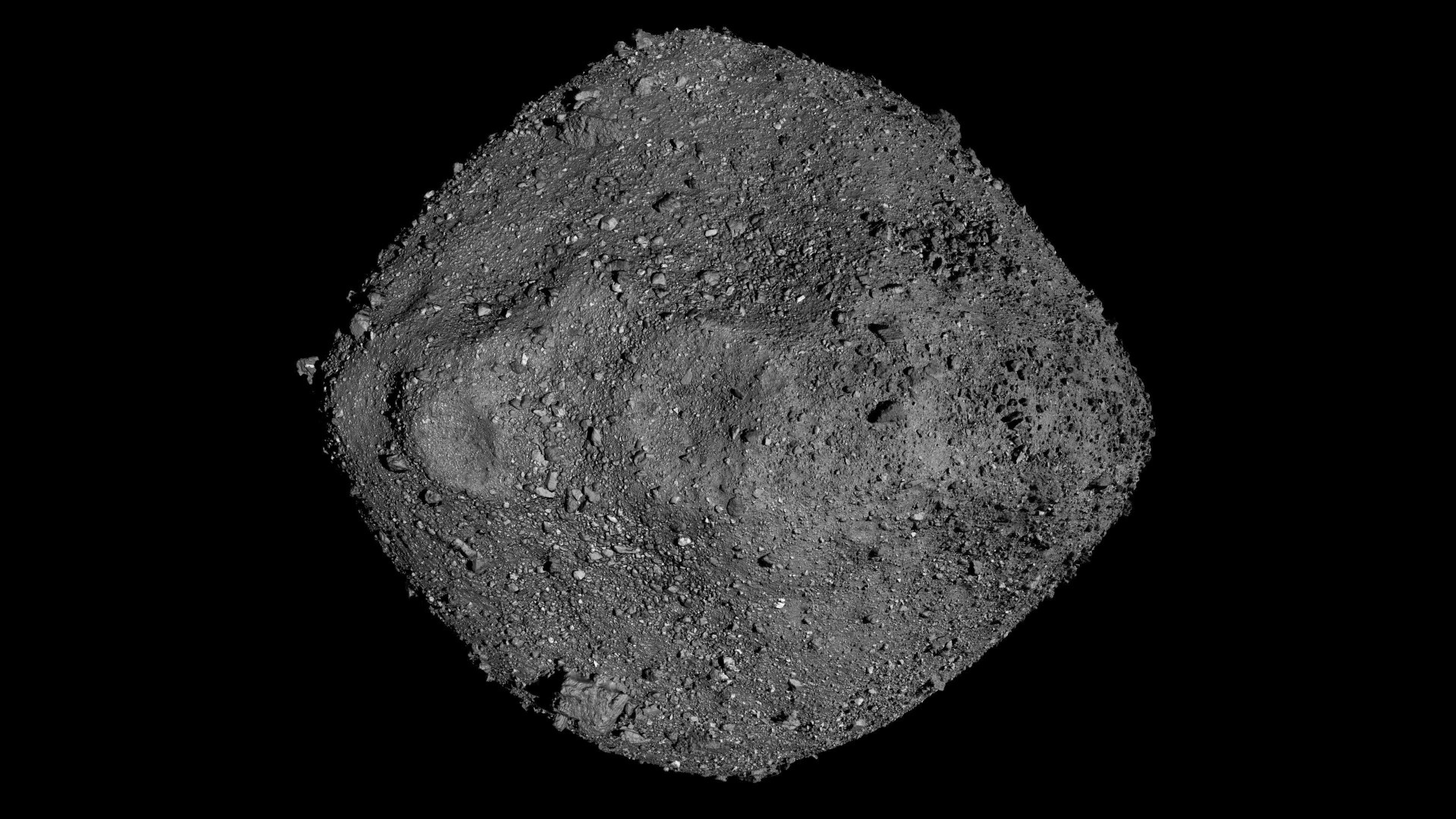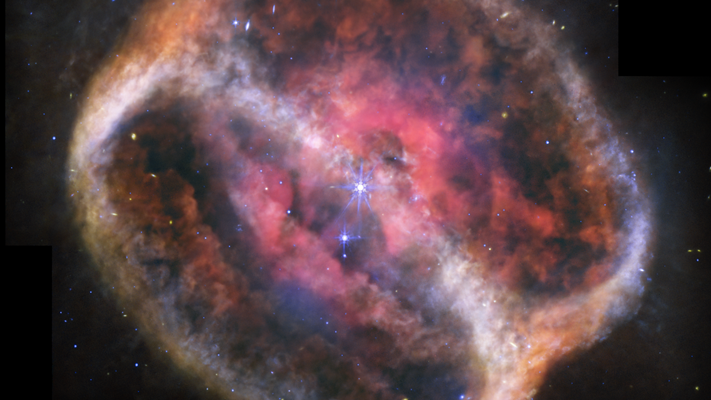Astronauts could mine asteroids for food someday, scientists say
Material harvested from asteroids could be used to sustain astronauts during long-duration space missions.

Material harvested from asteroids could be used to sustain astronauts during long-duration space missions.
Researchers from Western University's Institute for Earth and Space Exploration have identified a way to produce edible biomass, aka food, using microbes and the organic compounds found in asteroids. Their proposed process addresses the issue of how to pack enough food for future missions to the outer reaches of the solar system — or even beyond.
"To deeply explore the solar system, it will be necessary to become less reliant on the resupply tether to Earth," the researchers said in the study, which was led by Eric Pilles.
Currently, crew on the International Space Station (ISS) rely on resupply missions from Earth, which is costly and logistically complicated. Farming in space, although possible, is also complex. That's why the researchers suggest a more local source of food: space rocks.
Related: What will happen in spaceflight over the next 25 years?
Their solution requires using high heat to break down the organic compounds found in asteroids in oxygen-free environments — a process known as pyrolysis. The resulting hydrocarbons could then be fed to microbes that would consume the organic material and produce biomass of nutritional value to humans, according to the study.
The researchers focused on a specific type of asteroid called carbonaceous chondrites, which contain up to 10.5% water and substantial amounts of organic matter. This includes asteroids like Bennu, which NASA's OSIRIS-REx mission visited in 2018 to collect samples from. That mission returned pieces of the space rock to Earth in September of 2023 for scientific research.
Get the Space.com Newsletter
Breaking space news, the latest updates on rocket launches, skywatching events and more!
However, before working with actual asteroid samples, the current study calculates the potential food yield that could be produced using the suggested methods as well as how much asteroid material would be needed in total to yield those amounts.
In short, the researchers estimate that asteroids like Bennu could be used to produce about 50 to 6,550 metric tons of edible biomass with enough calories to support between 600 and 17,000 astronaut life years. The minimum is based on only aliphatic hydrocarbons being converted into food, whereas the maximum requires all insoluble organic matter to be used.
Therefore, mining asteroids could theoretically revolutionize long-duration space travel by allowing astronauts to rely on locally sourced food instead of needing to launch with large quantities from Earth. However, further studies will need to look at how asteroids would be mined and processed during such missions and if the resulting food is even fit for consumption and palatable.
"Based on these results, this approach of using carbon in asteroids to provide a distributed food source for humans exploring the solar system appears promising, but there are substantial areas of future work required," according to the study.
Their findings were published Oct. 3 in the International Journal of Astrobiology.
Join our Space Forums to keep talking space on the latest missions, night sky and more! And if you have a news tip, correction or comment, let us know at: community@space.com.

Samantha Mathewson joined Space.com as an intern in the summer of 2016. She received a B.A. in Journalism and Environmental Science at the University of New Haven, in Connecticut. Previously, her work has been published in Nature World News. When not writing or reading about science, Samantha enjoys traveling to new places and taking photos! You can follow her on Twitter @Sam_Ashley13.
-
Helio Well, what do you know? This isn't something I ever expected.Reply
Of course, the real discovery is that you can add picante sauce to anything and people will eat it. ;) -
Ken Fabian I can see carbonaceous asteroid material being an initial source of organic chemicals that is easier and cheaper than bringing it from Earth, but it will be to get a biocycling sytem up and running, not an alternative. Recycling human waste back to food seems essential and unavoidable - if only to avoid having to carry asteroid material to make food or wasting the biological wastes that are probably more suited and easier to produce food from. It is the shortening of the cycling - food made directly from s##t without plants in between - that people have aversion to.Reply
An asteroid colony might make use of such materials in place of working bio-cycling for a while, but I think there is no evading the need for reliance on bio-cycling on long range spacecraft or isolated habitats. Using bacteria, yeasts and other microorganisms to produce food from waste as directly as possible (without cycling through plants and animals) makes some sense to keep mass requirements down but I don't see the asteroid materials as much help. -
billslugg Direct to human is going to present a challenge to make people satisfied. We will need advanced printers that can make crunchy cells, smooth emulsions, chewy fibrous "meat". Tofu only goes so far.Reply -
Helio If a small asteroid is used as a part of the spacecraft, it would not only provide water and, apparently, food, but shelter. A great deal of shielding, for instance, is required for trips to the Jupiter moons due to extreme radiation. The Sun and cosmic particles will take a toll on travelers without appropriate shielding.Reply -
billslugg The lightest and most efficient shield is water. It's low atomic numbers recoil and sap the energy out of the cosmic rays. Rock shields make secondary radiation that can't be shielded. We have the equivalent of 40 feet of water above our heads, mass wise. A sphere of 80 feet diameter would have a mass of 8,600 tons. We will need to devise HUGE engines to get that much mass up to speed.Reply
OTOH, if we accelerated just the living quarters towards an asteroid, in a relatively short time we could land, build a shield, take off, and not lose speed. No massive engines needed. The asteroid itself having been at solar orbital speed before we got there. Then we just tweak it. -
Helio Reply
That's interesting. I wish we could get a few inches of it on the ground this month. :)billslugg said:The lightest and most efficient shield is water. It's low atomic numbers recoil and sap the energy out of the cosmic rays. Rock shields make secondary radiation that can't be shielded. We have the equivalent of 40 feet of water above our heads, mass wise.
Are you saying to use asteroids as fueling stations for water, food, etc., but still have the advantage of having their orbital speed?billslugg said:OTOH, if we accelerated just the living quarters towards an asteroid, in a relatively short time we could land, build a shield, take off, and not lose speed. No massive engines needed. The asteroid itself having been at solar orbital speed before we got there. Then we just tweak it.
Perhaps some could be tossed into gravity wells to give them useful outward velocities. Maybe stage them in a chain for multiple use landings. -
billslugg In a long trip, one can save gas by having fuel handed to you by others traveling in the same direction. You never need to stop.Reply
And, yes, other bodies can be used to make turns without losing any energy. The incoming and outgoing kinetic energy deltas being the same.
If a body is in orbit around the Sun then we can gain energy relative to the Sun, at the expense of the object, by doing a slingshot move.
We can also do a slingshot move in the backward direction to lose speed. This is how we send things to the Sun, by looping around the inner planets. -
Unclear Engineer You can't "slingshot" with and pick up supplies from the same orbital object. Slingshotting requires differences in velocity. It takes fuel to match velocity, and then increase velocity to leave the orbit of the place where you stop for supplies.Reply
Perhaps somebody stationed on an asteroid could fire pieces of it at a passing spacecraft to allow the spacecraft to pick it up without stopping. But, then you are talking about an establishing an industry on the asteroid. Is that really the low energy solution? -
Ken Fabian I am inclined to see asteroids as the preferred destination (for known resources of high economic value) and inner solar system ones as preferable to asteroid belt ones for the solar energy availability as well as less delta-v. Carbonaceous materials - and I expect lots of asteroids will be mixtures of stony, carbonaceous and metallic and some may have a lot of ice - look like a valuable source of a lot of non-metal resources. Carbonaceous chondrites still contain ample quantities of nickel-iron where the precious metals are - as grains and nodules in a softer matrix.Reply
Space travel is very mass constrained; here on Earth transport is mostly about fighting friction but payloads still usually far exceed the amounts of fuel by a large margin; in space there is no friction but requires overcoming enormous differences in speed between starts and destination - even for "close" ones - and large amounts of fuel/reaction mass are needed to move small payloads. I don't think any spacecraft could afford to carry any mass they don't absolutely have to, which makes heavy shielding or loads of unprocessed raw materials (or using asteroids as spacecraft) seriously problematic. -
billslugg "You can't "slingshot" with and pick up supplies from the same orbital object. " - Unclear EngineerReply
I said:
"In a long trip, one can save gas by having fuel handed to you by others traveling in the same direction. You never need to stop.
And, yes, other bodies can be used to make turns without losing any energy."
Just to clear things up, "other" means those bodies you don't care to stop at. Perhaps I should have phrased it differently.









